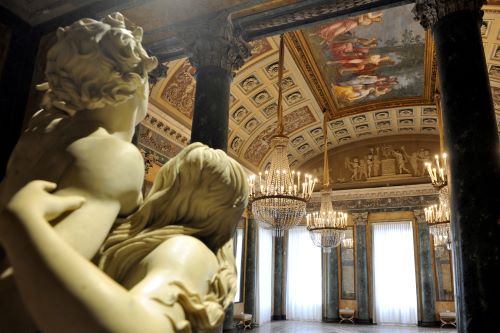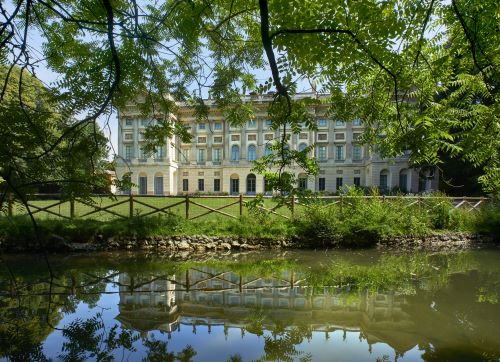The Royal Villa and the Garden - GAM Modern Art Gallery
The Royal Villa and the Garden

The villa
The Villa is a three-storey building with two lower advanced wings that embrace the courtyard of honor. This is shielded from via Palestro by a masonry surface with protruding ashlars, elegantly punctuated by access arches and niches.
In the Villa there are two facades:
The first, entrance to the current museum, houses three ashlar arches in the center of the ground floor surmounted by four Ionic columns which visually continue and culminate in the four sculptures of the balustrade.
The second façade, hidden from view because it is projected onto the garden behind, recovers the frontal scheme and proposes it again in three projecting modules which, together with the classic gables, give movement and plasticity to the building.
The rational scansion of the surfaces, the simplicity of the architectural scores and the presence of terracotta bas-reliefs give the Villa its unmistakable elegance, reminiscent of Piermarinian wisdom and well representative of the neoclassical aesthetics. The decorative apparatus, composed of a large number of statues and reliefs of mythological subjects, was designed by the poet Giuseppe Parini and sculpted by the skilled workers who worked, in the same years, on the façade of the Cathedral.
Inside, the ground floor is decorated with whimsical late-eighteenth-century ornamental motifs by Giocondo Albertolli, former collaborator of Piermarini in the decorative projects of Palazzo Reale and Villa Reale in Monza. The decoration of the first floor dates back to the first decades of the 19th century and represents the change in taste in the Napoleonic era culminating in Parnassus, the famous fresco by Andrea Appiani.

The garden
The English garden of the Villa, the first of this type in Milan, is one of the reasons of greatest admiration and novelty for visitors contemporary with its creation at the end of the 18th century. The garden, of a "picturesque" character, recreates a natural landscape where the vegetation, reclaiming the vestiges of history, allows ancient ruins to emerge.
In the centre, the pond is designed in such a way as to never allow a unitary vision, so as to inspire the observer's imagination, while the natural and romantic forms of the garden integrate perfectly with the classic and rational character of the building, enhancing each other.